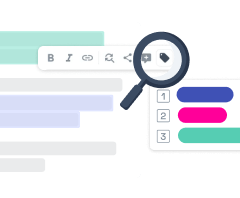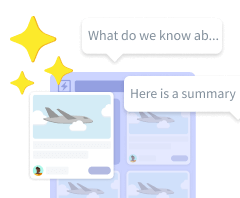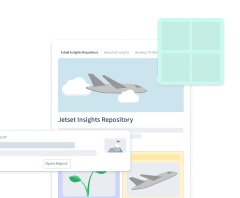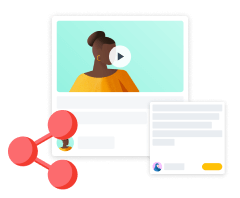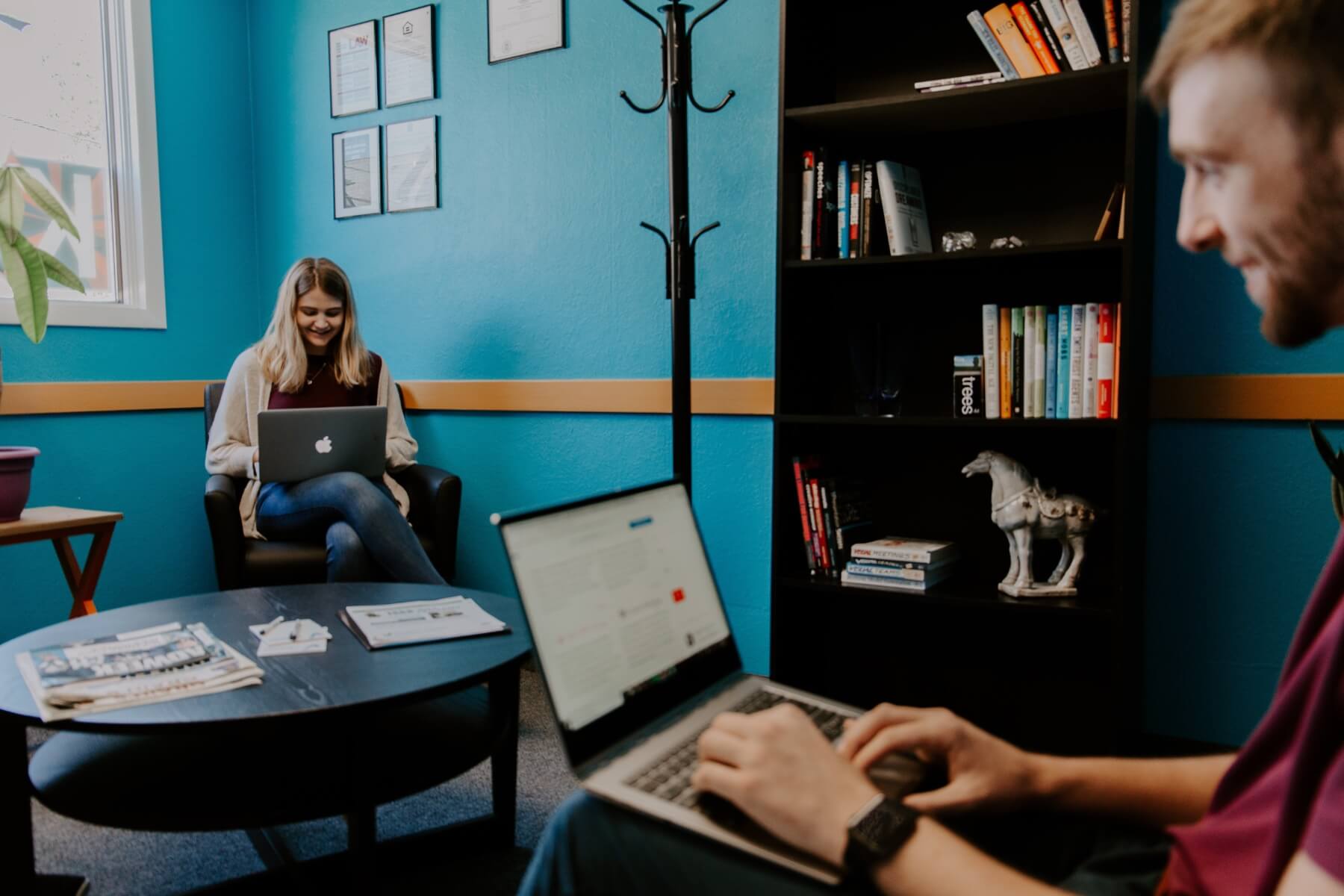
User research note taking - how to get it right from the start
Let’s clear up a common misconception right from the beginning. Good note taking is not to be equated with the ability to type or write fast. Viewing note taking as the mere production of words and sentences fails to acknowledge where the actual work happens.
The core skill of note taking is transforming a mass of observations into a digestible representation of text. In short: It’s more an effort of the brain than the hand(s). That’s why being good at typing doesn’t automatically make you a good note taker. It’s a skill that requires training and practice.
In this article you will learn about the importance of good note taking during user research, how to prepare for the best results, which tool to chose and concrete writing tips including examples.
- Why good note taking is important
- How to prepare for good note taking
- 3 tools for note taking in user research
- Do's and Don'ts for good note taking
Hint: This post makes a perfect quick start guide for colleagues who join research sessions as first-time note takers. Save it as a bookmark to have it handy when needed. Download the PDF with note taking tips here and feel free to share it.
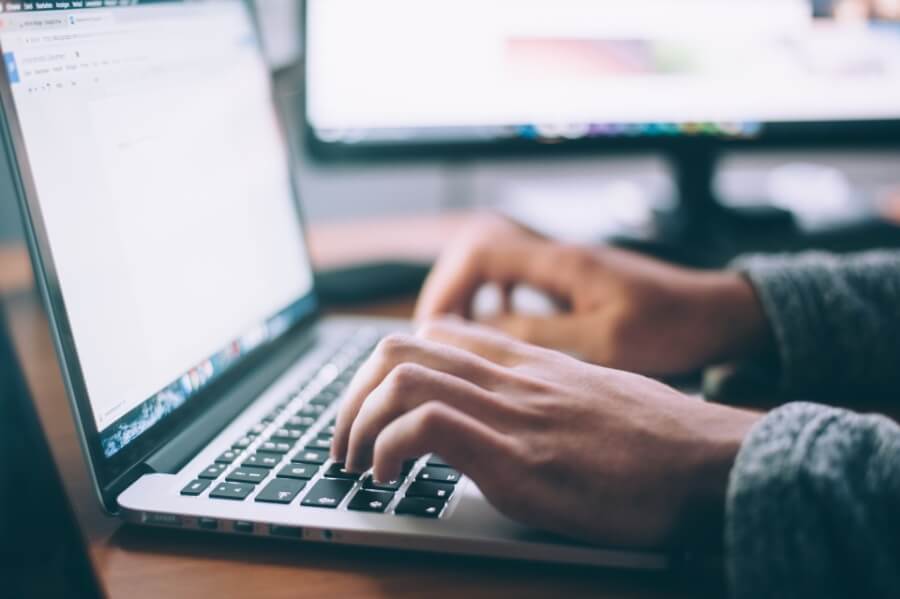
Why good note taking is important
High quality note taking lays the foundation for your research project. Often notes are the sole basis for data analysis and thus the ingredients we use to form insights. And just like in cooking, if the ingredients are subpar how can the outcomes be any good?
Done right, note taking will make the rest of the project run smoothly and produce solid results. Here are there properties that high-quality notes should have:
Complete
Fact-based

Formatted
Insufficient quality in notes often reveals itself only in later stages of the project when they can’t be adjusted easily. Thus getting it right from the start will pay off later.
With the properties of good notes in mind, let’s talk about how to achieve this. There are two aspects to consider to make note taking successful: The preparation and the writing itself.
The preparation
Before getting started with the actual note taking there are a few things to think of. Preparation includes thinking about tools, an appropriate format and who is contributing. There is no one perfect setup. What works best depends on the particular study.
As a general guidance it helps to think about the exact usage of the notes in the further steps of the project and adjust the approach accordingly. Are you planning to present findings to management or clients? Then taking timestamps to mark representative video clips is helpful. Do you want to do an online synthesis workshops with colleagues from different locations? Then it’s easier to take notes in a digital tool that allows to give everyone access instead of using post-its.
There are two recommendations that always hold independent of the study:
Session recording
Note taker

These were the general recommendations that apply to any study. Now let's cover some aspects that are not generalizable and depend on the type of research as well as the intended use of the notes.
Research environment
Live vs. post session note taking
Timestamps

Format
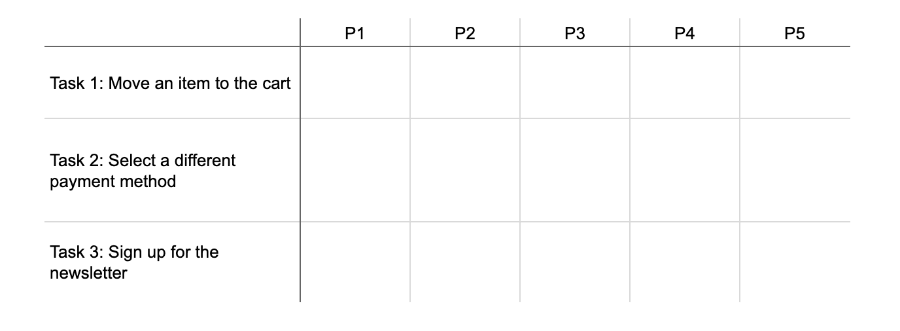
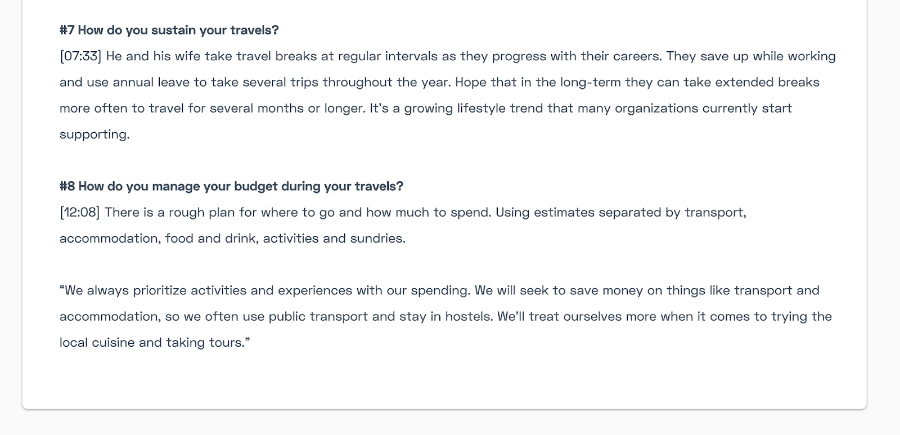
3 tools for note taking in user research
Now that we have covered the basics, let's look at three tools to use for note taking and their respective advantages and disadvantages.
Tool 1: Pen and paper
Although digital tools dominate our daily work, the classic way of handwritten note taking on a notepad or post-its can still be useful. This approach generally works best for smaller studies with a limited amount of data. For larger projects, an increasing number of sheets or post-its quickly become difficult to manage.
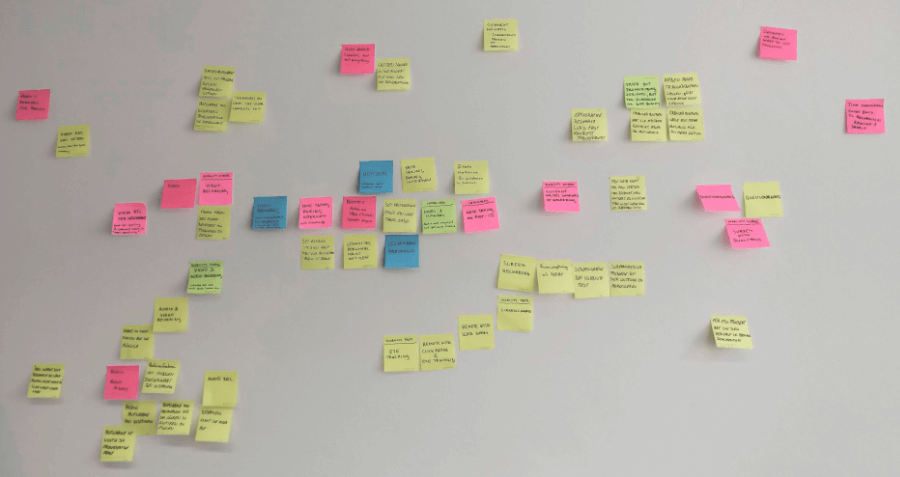
Pro
Con
Tool 2: Text editor or spreadsheet
Coming to digital tools, your standard text editor (like Word or Google Docs) or spreadsheet tool can can be used for note taking as well. While taking notes in a text editor is convenient, analyzing data is cumbersome and usually requires to copy the notes into a different tool. Spreadsheets are better suited for analysis, but also not ideal. Both types of tools make using media files practically impossible.
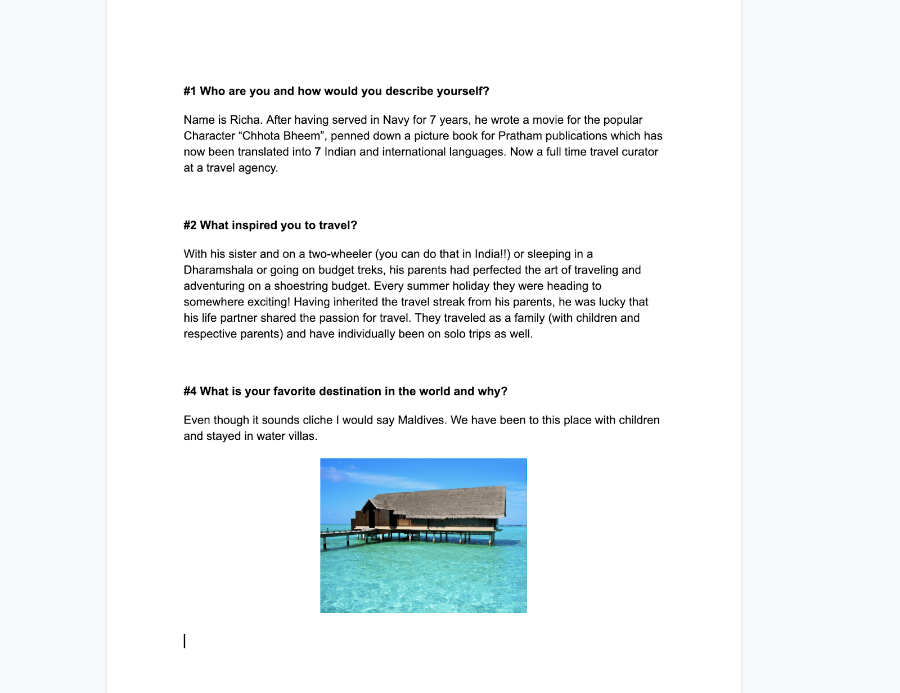
Pro
Con
Tool 3: User research software
The purpose of a dedicated user research tool is to facilitate and accelerate the synthesis of user research data. It combines the advantages of a digital tool with special features for data analysis. Taking notes in such a tool allows to immediately analyze them without any further effort to copy data to another tool. In addition, some of these tools act as a research repository allowing to archive notes and findings for future use.
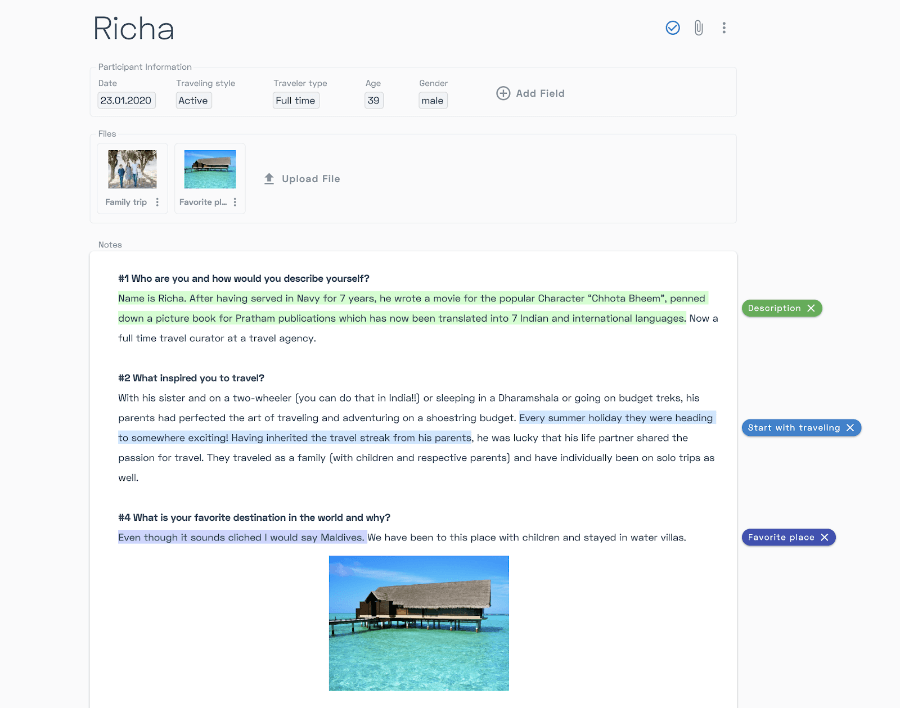
Pro
Con
Do’s and Don’ts for good note taking
And finally, here are some concrete tips on how to write and format notes well. There is a short PDF version of the tips available for download which is great for sharing with colleagues.
1. Stay true to the facts
Take the position of an objective observer and don’t make assumptions about the participant’s thinking or feeling. In case you want to add conclusions or possible explanations of behavior clearly indicate them as such.
Do
Don't
2. Stick to a consistent format
Be consistent about the note taking perspective (1st person or 3rd person), the style (bullet points vs. floating text) and the format of timestamps. Clearly differentiate quotes from observations. A common format is to take notes in the 3rd person view, to use quotes for direct speech when appropriate and to use timestamps in squared brackets.
Do
Don't
- Clicks export button.
- Now that was easy.
3. Carefully paraphrase
Notes are not a word for word transcript. The value is in documenting the session in a condensed form that makes it easy to read through again. It’s ok to leave out filling words or parts that the participant reformulates, unless that original formulation is of interest. While paraphrasing be careful not to interpret or leave out important information.
Do
Don't
4. Highlight missed or incomplete parts
You might not have sufficient time to capture everything that is said, for example during a fast-paced conversation. Don’t worry, that’s what the recording is for. Simply make a note with the timestamp and revisit that part after the session. If there is no recording, you can ask the participant to repeat what they said.
It might also happen that certain aspects aren’t covered, for instance because a conversation took a turn. Here is where the note taker can support the facilitator to identify incomplete parts. It’s common that facilitators ask note takers if they have any additional question for the participant at the end of a session. This is where you can get the missing pieces of information & prove your value as a note taker.
Do
Don't
5. Watch for the unspoken
The participant’s body language or emotional reaction can provide additional information beyond what is said or consciously done. Such reactions could be a deep breath before an answer, crossed arms or signs of excitement. While it’s important not to overinterpret these signals, it’s worth to capture them.
Do
Don't
6. Recap after the session
When the research session is over, take some time to review your notes while your memory is fresh. Fill gaps, adapt formulations and add paragraphs or headlines that help to scan the notes quickly. Also take time to discuss perceptions of the session with colleagues. Note down ideas as these can be the starting points for data analysis.
Now that you made it until the end of this article you know everything you need to take great user research notes. The best way to improve your skills at this point is plenty of practice. It helps to try different approaches to see what works well, but make sure to have a recording as a backup.
Done with note taking? Read the next article about analyzing user interviews.

